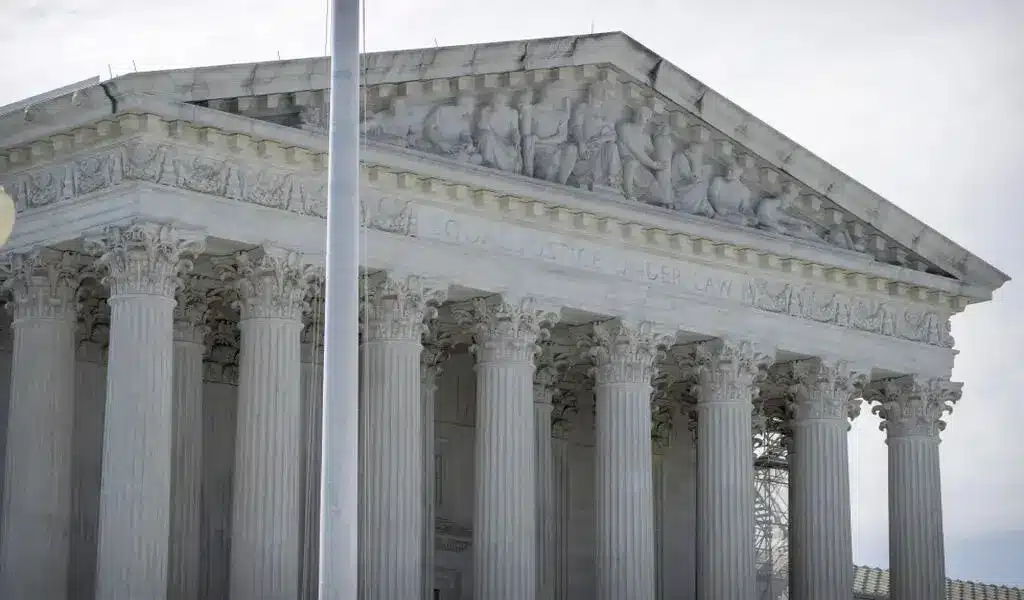News
Is The Success Of An Israeli Ground Invasion In Gaza Achievable?

(CTN NEWS) – The success of an Israeli ground invasion of Gaza in achieving its aims is a complex and highly contentious issue.
It depends on the specific objectives of such an operation and the broader geopolitical context.
Here are some factors to consider:
1. Security Objectives:
If the primary goal of an Israeli ground invasion is to eliminate specific threats, such as rocket launch sites, weapons caches, or the leadership of militant groups like Hamas, it may achieve some short-term gains in terms of degrading those capabilities.
2. Deterrence:
Ground invasions can be seen as a show of force, aimed at deterring future attacks. However, the effectiveness of deterrence is debatable, as it may lead to increased resentment and resistance among the civilian population.
3. Civilian Casualties:
A ground invasion poses significant risks to civilian lives and infrastructure. High civilian casualties can lead to international condemnation, increased anti-Israel sentiment, and may not be conducive to long-term stability.
4. Political and Diplomatic Impact:
International and regional diplomatic efforts can play a significant role. Mediation and peace negotiations can result in ceasefires and de-escalation, potentially rendering a ground invasion unnecessary.
5. Long-Term Stability:
Historically, ground invasions in Gaza have not led to long-term stability or peace. They can lead to cycles of violence and animosity, making it challenging to achieve lasting solutions.
6. Geopolitical Factors:
The geopolitical context, including the positions of key regional players and international actors, can have a significant impact on the outcome of such an operation.
7. Public Opinion:
Domestic and international public opinion can influence the success of a ground invasion. High civilian casualties may erode support for such actions.
In summary, the success of an Israeli ground invasion in Gaza is uncertain and depends on a range of factors, including the specific objectives, the response of militant groups, international diplomacy, and the willingness to engage in meaningful peace negotiations.
Ground invasions in the past have not resulted in long-term solutions, and alternative approaches, such as diplomacy and negotiations, may be necessary to achieve a more stable and lasting peace in the region.

Israel’s leadership has declared its determination to eliminate Hamas and transform Gaza.
Prime Minister Benjamin Netanyahu expressed a strong stance, stating, “Every Hamas member is a dead man” after a brutal attack by the group that resulted in over 1,400 casualties in Israel.
He pledged to dismantle both the “terror machine” and the political structure of Hamas.
Israel has announced an expansion of its ground operations in Gaza, raising expectations of a broader land invasion.
The ultimate goal, once Hamas is defeated, is complete disengagement from Gaza.
Defense Minister Yoav Gallant envisions a “new security regime” in which Israel would no longer bear responsibility for daily life in the territory.
The objectives of Operation Swords of Iron appear more ambitious than previous military campaigns in Gaza and could extend over several months.
However, questions arise about the feasibility of these aims and how commanders plan to achieve them.
Entering the Gaza Strip involves challenging house-to-house urban combat, with inherent risks for the civilian population of over two million.
Officials in Hamas-controlled Gaza report over 7,000 casualties and the displacement of hundreds of thousands from their homes.
The Israel Defense Forces (IDF) face the additional challenge of rescuing more than 220 hostages held in undisclosed locations throughout Gaza.
Military analyst Amir Bar Shalom of Israel’s Army Radio questions the feasibility of entirely dismantling Hamas, given its roots in extremist Islam.
He suggests that weakening the group’s operational capabilities may be a more realistic goal.
Weakening Hamas’s capabilities may be a more feasible goal than attempting to entirely dismantle it.
Israel has engaged in four wars with Hamas, and each effort to curb its rocket attacks has proven unsuccessful.
An IDF spokesperson emphasized the primary objective: ensuring that Hamas no longer possesses the military capacity to “threaten or harm Israeli civilians.”
Michael Milstein, who heads the Palestinian studies forum at Tel Aviv University, shares the view that eradicating Hamas would be an exceedingly intricate task.
He highlights the challenge of uprooting the deeply ingrained ideology associated with Hamas, an offshoot of the Muslim Brotherhood that has influenced Islamist movements worldwide.
In addition to the 25,000-plus members in Hamas’s military wing, there are an additional 80,000-90,000 individuals integrated into its social welfare infrastructure, known as Dawa.
The defense minister emphasized that a substantial part of Israel’s future over the next 75 years hinges on the outcome of this ongoing conflict.

Ground Invasion Fraught With Risk
The military operation faces several challenges that could potentially disrupt it.
Hamas’s armed wing, the Izzedine al-Qassam Brigades, has likely prepared for an Israeli offensive, including the placement of explosive devices and planning ambushes.
They also have an extensive network of tunnels that they can use to attack Israeli forces, as seen in past conflicts.
During the 2014 conflict, Israeli infantry battalions experienced heavy losses due to anti-tank mines, snipers, and ambushes, while numerous civilians lost their lives in fighting in a northern neighborhood of Gaza City.
This is one reason Israel has called for the evacuation of the northern half of the Gaza Strip to the south of the Wadi Gaza river.
Israelis have been cautioned to prepare for a protracted conflict, with a record number of reservists reporting for duty, totaling 360,000.
The key question is how long Israel can sustain its campaign, especially as international pressure intensifies for a ceasefire.
The mounting death toll, along with disrupted supplies of water, power, and fuel, as well as UN warnings of an unfolding humanitarian crisis, are putting pressure on Israel.
While the government and military may feel they have the support of Western leaders, there is a growing belief that Israel’s allies will intervene if they witness images of people facing starvation.
Moreover, pressure will continue to mount as civilian casualties rise.
The time frame for the campaign is a complex issue, as it necessitates both time and international considerations, particularly with the limitations imposed by the US administration.

Saving The Hostages
The situation involves a complex hostage scenario, with a mix of Israeli citizens and foreign nationals, including dual citizens.
As a result, several governments, such as the US, France, and the UK, have a vested interest in ensuring the safe release of these hostages.
French strategic specialist Col Michel Goya underscores the challenging decision that the IDF faces: choosing between prioritizing the safety of the hostages or inflicting maximum harm on Hamas.
Families of those held captive by Hamas are also intensifying their appeals, placing additional pressure on Israel’s leadership.
In the past, Israel engaged in a significant prisoner exchange, releasing over 1,000 prisoners to secure the freedom of Gilad Shalit, who had been held by Hamas for five years.
However, considering subsequent developments, such as the ascent of Yahya Sinwar within Hamas following his release in that swap, Israel may hesitate before pursuing another major prisoner exchange.
Neighbors Watching Closely
The duration and outcome of a ground offensive in Gaza may also be influenced by the reactions of Israel’s neighboring countries.
Egypt’s Rafah border crossing with Gaza has become a humanitarian focal point, but only limited quantities of aid are making their way into Gaza.
Foreign nationals and Palestinians with foreign passports are awaiting opportunities to leave.
As the suffering of Gazans intensifies due to the Israeli military campaign, Egypt may face growing pressure not to appear as if it has abandoned the Palestinians, according to Ofir Winter of Israel’s Institute for National Security Studies.
However, Egypt is unlikely to allow a mass influx of Gazans into northern Sinai.
President Abdul Fattah al-Sisi has issued a warning that any attempt to relocate Gazans to the Sinai Peninsula would lead to massive protests by Egyptians.
Jordan’s King Abdullah has drawn a “red line” regarding any potential efforts to push Palestinian refugees out of Gaza, emphasizing, “No refugees in Jordan, no refugees in Egypt.”
The situation along Israel’s northern border with Lebanon is also closely monitored.
There have been deadly cross-border attacks involving the Islamist militant group Hezbollah, but it hasn’t escalated into a new front against Israel yet.
Iran, Hezbollah’s primary sponsor, has threatened to open “new fronts” against Israel.
This threat was emphasized by US President Joe Biden, who warned any country, organization, or individual considering taking advantage of the situation not to do so.
To underscore this message, two US aircraft carriers, the USS Gerald Ford and USS Eisenhower, have been deployed to the eastern Mediterranean, and 2,000 US troops are on alert to respond to unfolding events.

What Is Israel’s Endgame For Gaza?
The potential outcome following a significant weakening of Hamas in Gaza raises questions about what would fill the resulting power vacuum.
Israel, having withdrawn from Gaza in 2005 and showing no intention of returning as an occupying force, is cautious about such a scenario. US President Joe Biden also opposes the idea.
A power vacuum could pose serious risks, as it might lead to multiple new challenges.
Some experts suggest that the Palestinian Authority (PA), which currently controls parts of the West Bank, could potentially return to Gaza, but this would be a complex process.
The international community may offer an interim solution, as seen when the UN administered Kosovo after Serbian forces withdrew in 1999.
However, there is widespread mistrust of the UN within Israel.
Another option involves creating an administration run by Gaza’s local authorities, tribes, clans, and non-governmental organizations, possibly with involvement from Egypt, the US, the PA, and other Arab states.
Egypt’s president has not expressed an interest in controlling Gaza but has pointed out that a “demilitarized Palestinian state” could have prevented the current conflict.
Rebuilding Gaza’s devastated infrastructure is an inevitable task, as has been done after previous conflicts.
Israel may seek tighter restrictions on “dual-use goods” entering Gaza, and there are calls for an expanded buffer zone along the Gaza-Israel fence to enhance protection for Israeli communities.
Regardless of the war’s outcome, Israel will aim to prevent a similar attack from happening in the future.
MORE RELATED NEWS:
A South Korean Court Approved the Military’s Ban on Gay Sex, LGBTQ
Phuket: Indians and Russians overstay their visas, leading a police operation
Thai Singer Accused of Cheating a Woman and Forcing her to have an Abortion

News
Google’s Search Dominance Is Unwinding, But Still Accounting 48% Search Revenue

Google is so closely associated with its key product that its name is a verb that signifies “search.” However, Google’s dominance in that sector is dwindling.
According to eMarketer, Google will lose control of the US search industry for the first time in decades next year.
Google will remain the dominant search player, accounting for 48% of American search advertising revenue. And, remarkably, Google is still increasing its sales in the field, despite being the dominating player in search since the early days of the George W. Bush administration. However, Amazon is growing at a quicker rate.
Google’s Search Dominance Is Unwinding
Amazon will hold over a quarter of US search ad dollars next year, rising to 27% by 2026, while Google will fall even more, according to eMarketer.
The Wall Street Journal was first to report on the forecast.
Lest you think you’ll have to switch to Bing or Yahoo, this isn’t the end of Google or anything really near.
Google is the fourth-most valued public firm in the world. Its market worth is $2.1 trillion, trailing just Apple, Microsoft, and the AI chip darling Nvidia. It also maintains its dominance in other industries, such as display advertisements, where it dominates alongside Facebook’s parent firm Meta, and video ads on YouTube.
To put those “other” firms in context, each is worth more than Delta Air Lines’ total market value. So, yeah, Google is not going anywhere.
Nonetheless, Google faces numerous dangers to its operations, particularly from antitrust regulators.
On Monday, a federal judge in San Francisco ruled that Google must open up its Google Play Store to competitors, dealing a significant blow to the firm in its long-running battle with Fortnite creator Epic Games. Google announced that it would appeal the verdict.
In August, a federal judge ruled that Google has an illegal monopoly on search. That verdict could lead to the dissolution of the company’s search operation. Another antitrust lawsuit filed last month accuses Google of abusing its dominance in the online advertising business.
Meanwhile, European regulators have compelled Google to follow tough new standards, which have resulted in multiple $1 billion-plus fines.

Pixa Bay
Google’s Search Dominance Is Unwinding
On top of that, the marketplace is becoming more difficult on its own.
TikTok, the fastest-growing social network, is expanding into the search market. And Amazon has accomplished something few other digital titans have done to date: it has established a habit.
When you want to buy anything, you usually go to Amazon, not Google. Amazon then buys adverts to push companies’ products to the top of your search results, increasing sales and earning Amazon a greater portion of the revenue. According to eMarketer, it is expected to generate $27.8 billion in search revenue in the United States next year, trailing only Google’s $62.9 billion total.
And then there’s AI, the technology that (supposedly) will change everything.
Why search in stilted language for “kendall jenner why bad bunny breakup” or “police moving violation driver rights no stop sign” when you can just ask OpenAI’s ChatGPT, “What’s going on with Kendall Jenner and Bad Bunny?” in “I need help fighting a moving violation involving a stop sign that wasn’t visible.” Google is working on exactly this technology with its Gemini product, but its success is far from guaranteed, especially with Apple collaborating with OpenAI and other businesses rapidly joining the market.
A Google spokeswoman referred to a blog post from last week in which the company unveiled ads in its AI overviews (the AI-generated text that appears at the top of search results). It’s Google’s way of expressing its ability to profit on a changing marketplace while retaining its business, even as its consumers steadily transition to ask-and-answer AI and away from search.

Google has long used a single catchphrase to defend itself against opponents who claim it is a monopoly abusing its power: competition is only a click away. Until recently, that seemed comically obtuse. Really? We are going to switch to Bing? Or Duck Duck Go? Give me a break.
But today, it feels more like reality.
Google is in no danger of disappearing. However, every highly dominating company faces some type of reckoning over time. GE, a Dow mainstay for more than a century, was broken up last year and is now a shell of its previous dominance. Sears declared bankruptcy in 2022 and is virtually out of business. US Steel, long the foundation of American manufacturing, is attempting to sell itself to a Japanese corporation.
SOURCE | CNN
News
2024 | Supreme Court Won’t Hear Appeal From Elon Musk’s X Platform Over Warrant In Trump Case

Washington — Trump Media, The Supreme Court announced Monday that it will not hear an appeal from social media platform X about a search warrant acquired by prosecutors in the election meddling case against former President Donald Trump.
The justices did not explain their rationale, and there were no recorded dissents.
The firm, which was known as Twitter before being purchased by billionaire Elon Musk, claims a nondisclosure order that prevented it from informing Trump about the warrant obtained by special counsel Jack Smith’s team violated its First Amendment rights.
The business also claims Trump should have had an opportunity to exercise executive privilege. If not reined in, the government may employ similar tactics to intercept additional privileged communications, their lawyers contended.
Supreme Court Won’t Hear Appeal From Elon Musk’s X Platform Over Warrant In Trump Case
Two neutral electronic privacy groups also joined in, urging the high court to hear the case on First Amendment grounds.
Prosecutors, however, claim that the corporation never shown that Trump utilized the account for official purposes, therefore executive privilege is not a problem. A lower court also determined that informing Trump could have compromised the current probe.

Trump utilized his Twitter account in the weeks preceding up to his supporters’ attack on the Capitol on January 6, 2021, to spread false assertions about the election, which prosecutors claim were intended to create doubt in the democratic process.
The indictment describes how Trump used his Twitter account to encourage his followers to travel to Washington on Jan. 6, pressuring Vice President Mike Pence to reject the certification, and falsely claiming that the Capitol crowd, which battered police officers and destroyed glass, was peaceful.
Supreme Court Won’t Hear Appeal From Elon Musk’s X Platform Over Warrant In Trump Case
That case is now moving forward following the Supreme Court’s verdict in July, which granted Trump full immunity from criminal prosecution as a former president.
The warrant arrived at Twitter amid quick changes implemented by Musk, who bought the company in 2022 and has since cut off most of its workforce, including those dedicated to combating disinformation and hate speech.
SOURCE | AP
News
The Supreme Court Turns Down Biden’s Government Appeal in a Texas Emergency Abortion Matter.

(VOR News) – A ruling that prohibits emergency abortions that contravene the Supreme Court law in the state of Texas, which has one of the most stringent abortion restrictions in the country, has been upheld by the Supreme Court of the United States. The United States Supreme Court upheld this decision.
The justices did not provide any specifics regarding the underlying reasons for their decision to uphold an order from a lower court that declared hospitals cannot be legally obligated to administer abortions if doing so would violate the law in the state of Texas.
Institutions are not required to perform abortions, as stipulated in the decree. The common populace did not investigate any opposing viewpoints. The decision was made just weeks before a presidential election that brought abortion to the forefront of the political agenda.
This decision follows the 2022 Supreme Court ruling that ended abortion nationwide.
In response to a request from the administration of Vice President Joe Biden to overturn the lower court’s decision, the justices expressed their disapproval.
The government contends that hospitals are obligated to perform abortions in compliance with federal legislation when the health or life of an expectant patient is in an exceedingly precarious condition.
This is the case in regions where the procedure is prohibited. The difficulty hospitals in Texas and other states are experiencing in determining whether or not routine care could be in violation of stringent state laws that prohibit abortion has resulted in an increase in the number of complaints concerning pregnant women who are experiencing medical distress being turned away from emergency rooms.
The administration cited the Supreme Court’s ruling in a case that bore a striking resemblance to the one that was presented to it in Idaho at the beginning of the year. The justices took a limited decision in that case to allow the continuation of emergency abortions without interruption while a lawsuit was still being heard.
In contrast, Texas has been a vocal proponent of the injunction’s continued enforcement. Texas has argued that its circumstances are distinct from those of Idaho, as the state does have an exemption for situations that pose a significant hazard to the health of an expectant patient.
According to the state, the discrepancy is the result of this exemption. The state of Idaho had a provision that safeguarded a woman’s life when the issue was first broached; however, it did not include protection for her health.
Certified medical practitioners are not obligated to wait until a woman’s life is in imminent peril before they are legally permitted to perform an abortion, as determined by the state supreme court.
The state of Texas highlighted this to the Supreme Court.
Nevertheless, medical professionals have criticized the Texas statute as being perilously ambiguous, and a medical board has declined to provide a list of all the disorders that are eligible for an exception. Furthermore, the statute has been criticized for its hazardous ambiguity.
For an extended period, termination of pregnancies has been a standard procedure in medical treatment for individuals who have been experiencing significant issues. It is implemented in this manner to prevent catastrophic outcomes, such as sepsis, organ failure, and other severe scenarios.
Nevertheless, medical professionals and hospitals in Texas and other states with strict abortion laws have noted that it is uncertain whether or not these terminations could be in violation of abortion prohibitions that include the possibility of a prison sentence. This is the case in regions where abortion prohibitions are exceedingly restrictive.
Following the Supreme Court’s decision to overturn Roe v. Wade, which resulted in restrictions on the rights of women to have abortions in several Republican-ruled states, the Texas case was revisited in 2022.
As per the orders that were disclosed by the administration of Vice President Joe Biden, hospitals are still required to provide abortions in cases that are classified as dire emergency.
As stipulated in a piece of health care legislation, the majority of hospitals are obligated to provide medical assistance to patients who are experiencing medical distress. This is in accordance with the law.
The state of Texas maintained that hospitals should not be obligated to provide abortions throughout the litigation, as doing so would violate the state’s constitutional prohibition on abortions. In its January judgment, the 5th United States Circuit Court of Appeals concurred with the state and acknowledged that the administration had exceeded its authority.
SOURCE: AP
SEE ALSO:
Could Last-Minute Surprises Derail Kamala Harris’ Campaign? “Nostradamus” Explains the US Poll.
-

 News4 years ago
News4 years agoLet’s Know About Ultra High Net Worth Individual
-
Entertainment2 years ago
Mabelle Prior: The Voice of Hope, Resilience, and Diversity Inspiring Generations
-
News11 years ago
Enviromental Groups Tell Mekong Leaders Lao Dam Evaluation Process Flawed
-

 Health4 years ago
Health4 years agoHow Much Ivermectin Should You Take?
-

 Tech3 years ago
Tech3 years agoTop Forex Brokers of 2023: Reviews and Analysis for Successful Trading
-

 Lifestyles3 years ago
Lifestyles3 years agoAries Soulmate Signs
-

 Entertainment3 years ago
Entertainment3 years agoWhat Should I Do If Disney Plus Keeps Logging Me Out of TV?
-

 Health3 years ago
Health3 years agoCan I Buy Ivermectin Without A Prescription in the USA?


